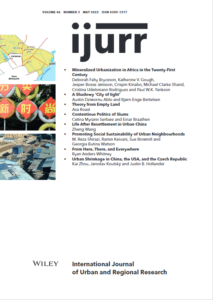This article focuses on the urbanizing impact of the post-millennial mineral boom at artisanal and small-scale (ASM) or large-scale (LSM) mining sites in three mineral-rich countries, involving gold in Ghana, diamonds in Angola, and both minerals in Tanzania. The focus is on comparing the agency of miners and other residents migrating to, settling in, and making the mining site habitable. Their mobility and settlement patterns reveal an urbanization trend marked by population agglomeration and expanding labour complexity, taking distinct forms at the rush and mature stages of gold and diamond ASM and LSM sites. Citing data from household surveys conducted at 12 mining sites, we trace how ‘mineralized urbanization’ propels in-migration, rising localized purchasing power, and proliferating service sector and trade activities, fuelling both urban demographic and economic change along the mining extraction trajectory. LSM and ASM generate synergies as well as detractive forces, depending on the size, age and history of the mining settlement development. What emerges is the differential development of households and settlements through strategic economic manoeuvring and the rough and tumble of happenstance, underlined by a compelling, albeit fluctuating, trajectory of non-renewable mineralized urbanization.
Details
Written by:
Deborah Fahy Bryceson, Katherine V. Gough, Jesper Bosse Jønsson, Crispin Kinabo, Michael Clarke Shand, Cristina Udelsmann Rodrigues & Paul W.K. Yankson
Digital Object Identifier (DOI)
10.1111/1468-2427.13086
About DOI

